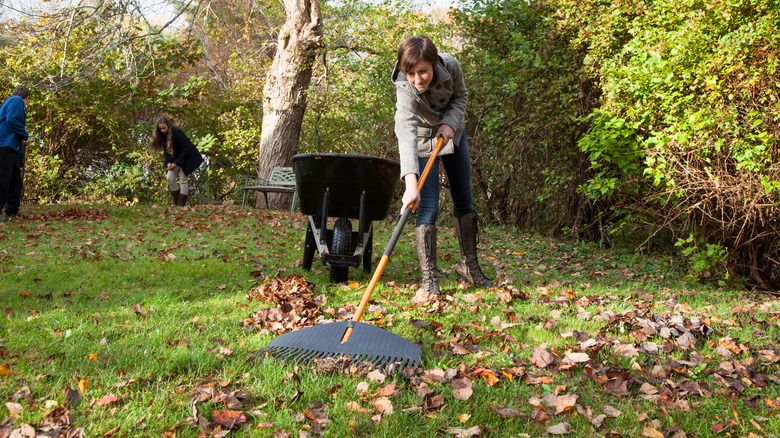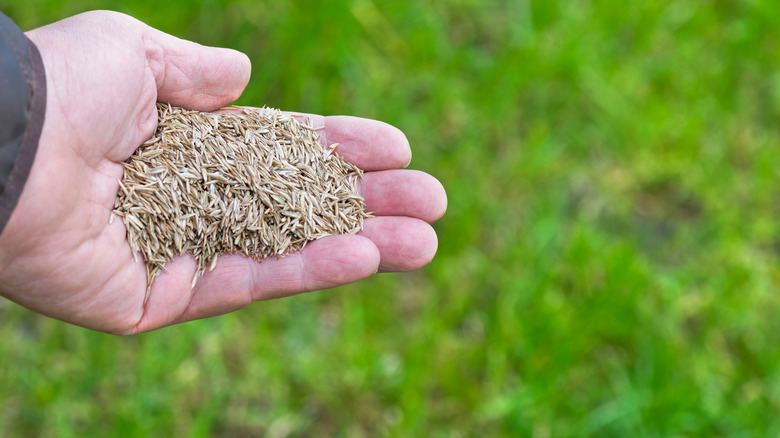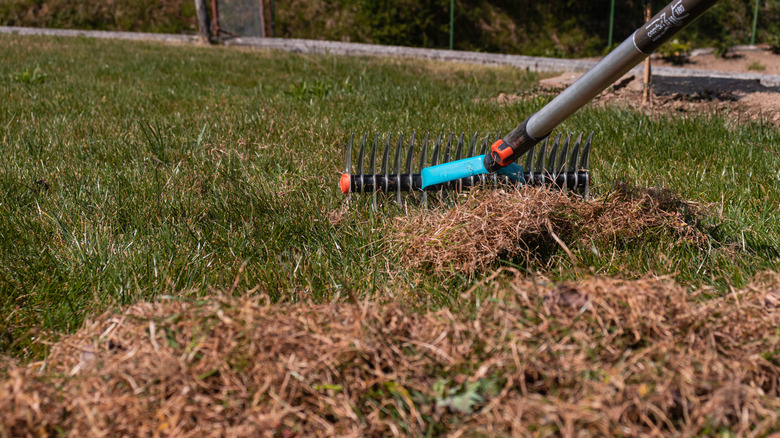Important Steps To Keep Your No-Mow Lawn In Top Shape This Fall
Fall is the ideal time to tackle important tasks for your no-mow lawn that will help it thrive during the winter months and prepare it for spring. Fall's cooling temperatures and often drier soil make the right combination of elements to over-seed your lawn, remove thatch, and aerate the soil. You may have invested in a no-mow lawn because you don't want to spend a lot of time maintaining it, but this is the time of the year to roll up your sleeves to ensure the rest of the year goes well.
It's a good idea to start with some basics, like removing all fallen leaves, twigs, and other debris present. This material causes moisture to build under it, leading to an increased risk of mildew build-up while limiting exposure to light. If you don't want to spend your day raking these leaves, consider a mulching lawn mower pass over them. That will break down the leaves into small pieces that add organic matter to the soil, supporting grass growth.
It's not necessary to fertilize your no-mow lawn during the fall months. No mow lawns don't need a lot of nitrogen, and too much of it will damage the root system. Fertilizers with high nitrogen may promote a nice, lush level of blade growth, but that only means you'll need to detach or mow the grass as it grows too quickly.
Overseed your no mow lawn in the fall months
Fall is the ideal time for over-seeding your no-mow lawn due to the weather conditions. You don't have to till the soil to add these seeds, as long as there isn't a significant amount of thatch present (and if there is, follow the next step first!) When temperatures drop in the fall months, cool-season grasses will usually germinate better than if you were to plant them during the hot summer months. This is also a great way to limit some of the weed growth that can occur when overseeding. Many weeds grow at their best during the spring months, which means, you'll have fewer weeds taking advantage of the ideal conditions.
Choose your favorite no-mow lawn seed mixture to apply to the grass. Spread the grass seed using a spreader or by hand, aiming for a consistent level of coverage. Once down, tap it into the dirt, either by walking on it or using a lawn roller. You don't need to overdo it, but even just raking it in helps the grass seed to germinate.
Then, it's time to water since keeping the soil moist is essential for ensuring the best growth during this time of the year. When possible, water this area in the early morning hours for 10 to 20 minutes, allow the soil to saturate, and then do it again the next day or every other day. Follow this process for two or three weeks to get the best results.
Dethatch and aerate your no mow lawn during the fall
Fall is also the best time of the year to remove thatch from the lawn. Thatch, which is the build-up of organic material that sits on top of the soil, limiting water and air penetration, can limit the overall growth and development of your lawn. With no mow lawns that don't get mowed often, there is a higher risk of thatch development because the material isn't cut down. Removing thatch during the fall ensures that new, healthy grass can flourish in the spring months. Rake the area for the best results, moving over the top of the surface to pull up any organic material present.
Now that you have the dead material no longer blocking the soil, aerate it to make it even easier for water and air to penetrate into the soil. This is an important step for all no-mow lawns with heavy clay soil. The process involves a machine (which you can often rent from a local tool rental location) that pulls up plugs of dirt across the grass. Then, fill in the resulting holes with a softer, more sand-like soil. This allows for water and air to move freely through the rest of the soil, encouraging better growth.
Like all good lawn maintenance in the fall, tailor the treatments you use based on the condition of your no-mow lawn. Putting in a weekend of work now could mean a significantly improved lawn for the rest of the year.


